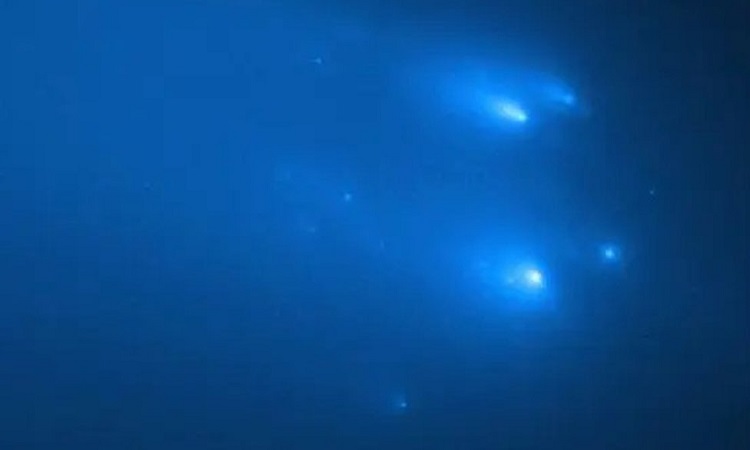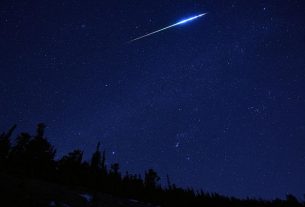The Hubble Space Telescope recently captured the sharpest images to date of Comet C / 2019 Y4 (ATLAS) falling apart.
Spotted for the first time on December 28, 2019, the comet ATLAS had promised us a great show, with a maximum of brightness initially planned for the end of May. However, the comet suddenly began to darken a few weeks ago, leading astronomers to speculate that its frozen core could fall apart. These suspicions were then confirmed on April 11 by amateur astronomer Jose de Queiroz, who photographed about three pieces of the comet.
A comet in pieces
New observations of the Hubble space telescope, carried out on April 20 and 23, confirm that this process of rupture is still in progress. On these reports, astronomers were able to distinguish around thirty cometary coins, some as “small” as a house. Recall that at the height of its shape, the ATLAS core may have been as large as two football fields.
“Their appearance changes considerably between the two days, so much so that it is quite difficult to connect the dots,” said David Jewitt of the University of California at Los Angeles (United States), behind these images. I don’t know if this is due to the fact that the individual pieces flash in response to sunlight, acting like twinkling lights on a Christmas tree, or because different fragments appear on different days. ”
Quanzhi Ye of the University of Maryland, co-author of this study, sees it as an opportunity to study a rarely observed phenomenon. “It’s really exciting, both because such events are super cool to watch and because they only happen once or twice in a decade,” he says. Most fragmented comets are usually too weak to see. ”
The reason for this break
For astronomers, the causes of this sudden fragmentation are still unclear. They nevertheless suggest that the degassing process of the sublimating ice, initiated at the approach of the Sun, did not operate uniformly through the nucleus, ultimately promoting its rupture. Further analysis of Hubble data may soon allow researchers to confirm or not confirm this hypothesis. It is also possible that this disintegration process is more common than we think.
Note that the comet, at the time of these observations, was located inside the orbit of Mars, at a distance of approximately 145 million kilometers from Earth. ATLAS will make its closest approach to Earth on May 23, at a distance of approximately 115 million kilometers. It will then begin to bypass the Sun a week later.
Finally, remember that another comet is approaching (F8 SWAN), spotted on March 25 by the Solar and Hemispheric Observatory (SoHO). The object will land on Wednesday, May 13, about 85 million kilometers apart. It remains to be seen whether it will hold up. It is indeed possible that it will suffer the same fate as ATLAS as it advances towards the Sun.




